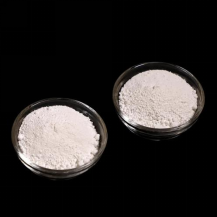
Oct . 14, 2024 02:06 Back to list
Titanium Dioxide White Pigment Suppliers and Manufacturers for Various Applications
The Role of TiO2 White Pigment Manufacturers in Modern Industry
Titanium Dioxide (TiO2) has established itself as one of the most important pigments used across various industries due to its outstanding properties. Renowned for its brightness, opacity, and durability, TiO2 finds applications in coatings, plastics, paper, and even cosmetics. As a result, the role of TiO2 white pigment manufacturers has become increasingly crucial in meeting the demands of global markets.
Understanding Titanium Dioxide
Titanium Dioxide is primarily derived from titanium minerals, mainly ilmenite and rutile. It is valued for its ability to provide excellent coverage, high refractive index, and resistance to UV light. This makes TiO2 an ideal choice for products that need to maintain color integrity and brightness over time. The pigment is categorized into two main types rutile and anatase. Rutile is preferred for most applications due to its superior opacity and durability.
Manufacturing Process
The production of TiO2 involves two main processes the sulfate process and the chloride process. The sulfate process, which is more traditional, includes treating titanium ore with sulfuric acid, resulting in a high-quality titanium dioxide pigment. This method generates large amounts of waste, which poses environmental challenges. On the other hand, the chloride process, which is gaining popularity due to its efficiency and lower environmental impact, involves reacting titanium tetrachloride with oxygen at high temperatures to produce TiO2. The choice of manufacturing process significantly influences the quality, cost, and environmental footprint of the final product.
Market Demand and Applications
tio2 white pigment manufacturer

The global titanium dioxide market is witnessing robust growth, primarily driven by the surge in demand from end-user industries such as paints and coatings, plastics, automotive, and construction. These sectors prefer TiO2 for its ability to enhance product performance by providing excellent color quality and longevity. For instance, in the coatings industry, TiO2 not only improves the aesthetic appeal of paints but also enhances their resistance to fading and weathering.
The plastics industry also increasingly depends on TiO2 for color and stability, especially in products exposed to sunlight. From packaging materials to automotive interiors, TiO2 plays a pivotal role in ensuring product durability and visual quality. Additionally, the growing trend towards sustainable development has led manufacturers to explore biodegradable and eco-friendly alternatives to traditional TiO2 products, further expanding the market landscape.
Environmental Considerations
As global awareness of environmental issues increases, TiO2 manufacturers are also under pressure to adopt sustainable practices. This includes reducing emissions, minimizing waste generation, and ensuring compliance with environmental regulations. Many manufacturers are investing in advanced technologies to produce TiO2 more efficiently and with a smaller ecological footprint. For instance, using recycled materials in the production process or improving energy efficiency can help mitigate environmental impacts.
Moreover, the development of innovative TiO2 formulations that can provide additional benefits, such as photocatalytic properties, is gaining traction. These could be used in applications like self-cleaning surfaces and air purification, aligning with the demands for greener industrial solutions.
Conclusion
In conclusion, TiO2 white pigment manufacturers play a vital role in various industries, contributing to product quality and sustainability. As market demand continues to grow, manufacturers must adapt and innovate to meet the challenges of a competitive landscape and environmental responsibility. The future of TiO2 production looks promising, with advancements in technology and a stronger emphasis on eco-friendly practices paving the way for a more sustainable industry. The continued collaboration between manufacturers, regulatory bodies, and consumers will be essential to enhance the value and performance of titanium dioxide in the years to come.
-
Premium 6618 Titanium Dioxide for GPT-4 Turbo Applications
NewsJul.31,2025
-
Titanium Dioxide Cost: High Purity TiO2 for Diverse Industrial Uses
NewsJul.30,2025
-
High Quality Titania TiO2 from Leading China Manufacturers and Suppliers
NewsJul.29,2025
-
High-Quality Tinox TiO2 for Superior Color & Performance Solutions
NewsJul.29,2025
-
High Quality Titania TiO2 from Leading China Supplier & Manufacturer
NewsJul.29,2025
-
High-Performance r6618 TiO2 for Superior Whitening and Versatility
NewsJul.28,2025
